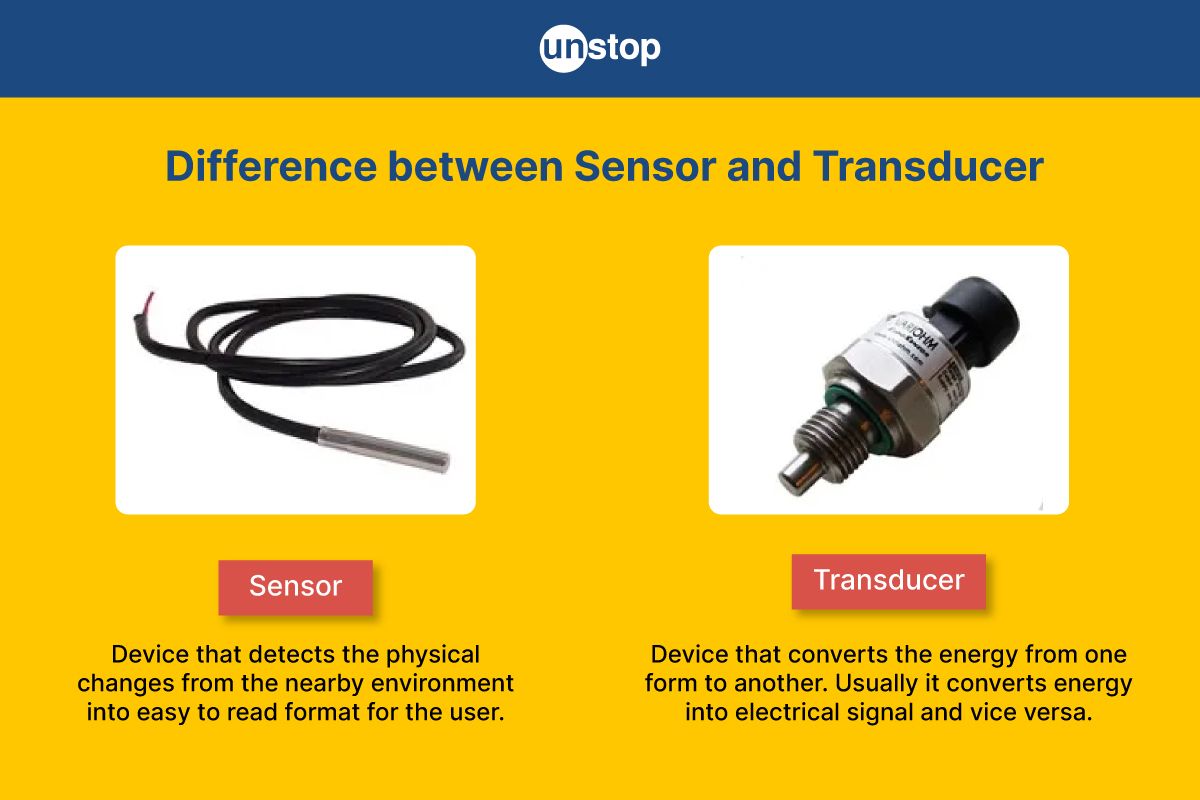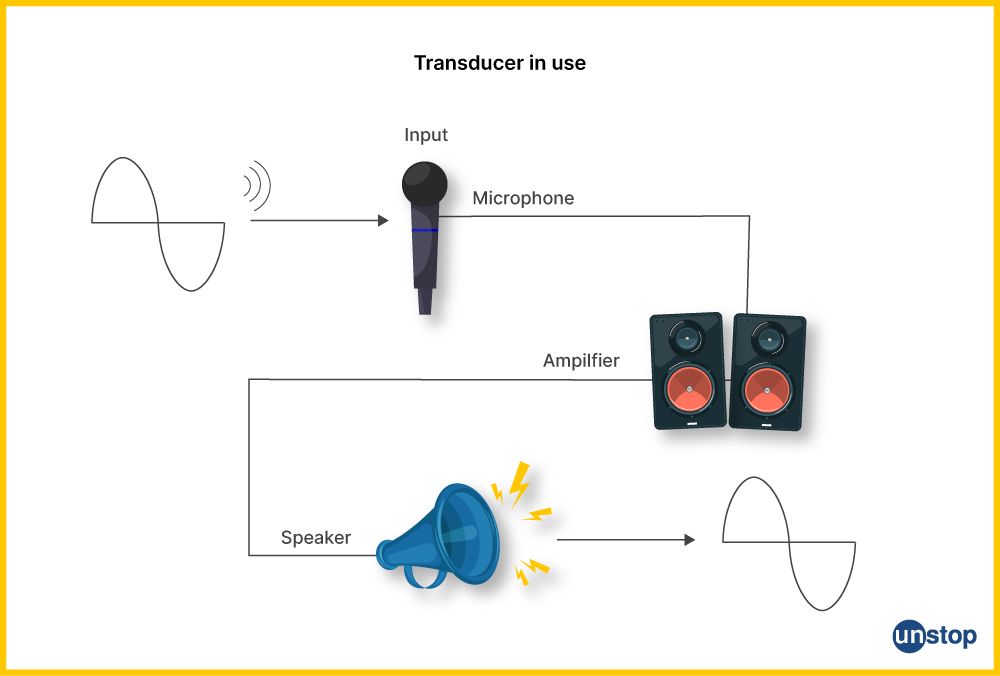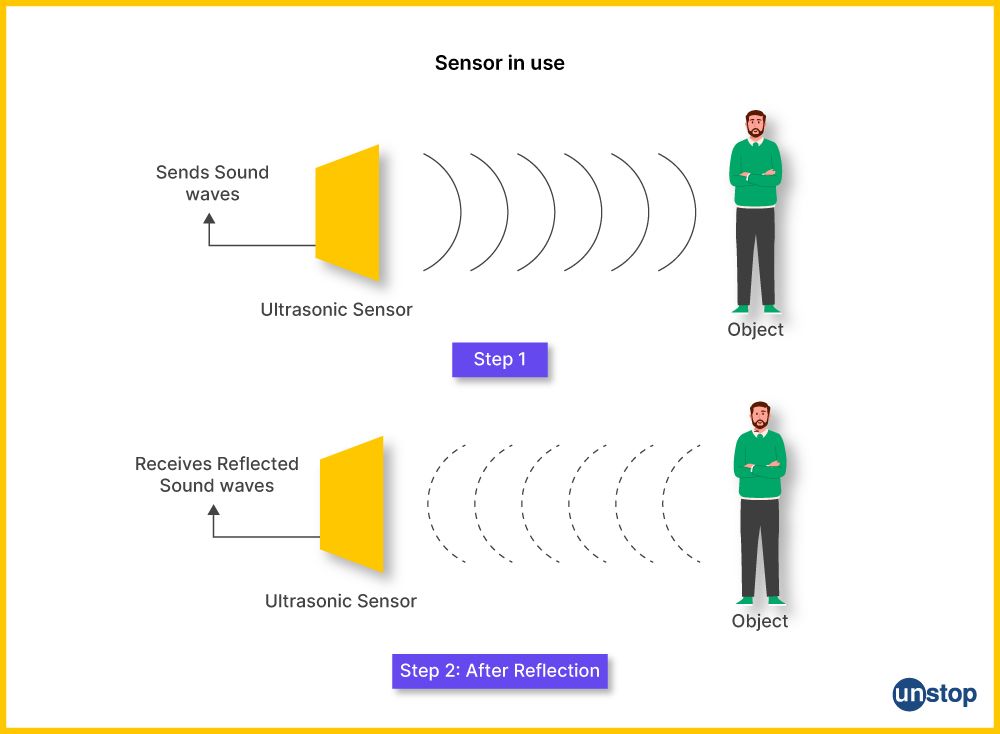- Difference Between Sensor and Transducer
- What are Sensors?
- What are Transducers?
- Sensors and Transducers: Applications
- Frequently Asked Questions
Difference Between Sensor And Transducer Explained In The Simplest Terms

Did you ever know that we use electronic components like sensors and transducers in our day-to-day lives? These are used in electronic gadgets such as mobile phones, and smartwatches, and various applications, like smart homes, smart car parking, etc.
Sensors are devices that detect and respond to physical changes or stimuli, such as light, temperature, or pressure. They are used in various applications, including mobile phones, smartwatches, and smart home systems. Transducers, on the other hand, convert one form of energy into another, such as electrical signals. They are commonly used in devices like microphones and speakers. Both sensors and transducers are important as they enable the collection and conversion of data, allowing for the functioning of electronic devices and applications.
To explain the difference between sensor and transducer, in short, we can say:
- Sensors detect the environment
- Transducers transform energy forms
Let’s first understand the core difference between sensor and transducer before we dive deeper into their components and examples:
Difference Between Sensor and Transducer
Sensors and transducers are used to manipulate signals according to the changes in the environment. But, transducers transform one form of energy to another in which the input signal and the output signal are not the same.
Example of Transducer:
Let's assume we are speaking using a microphone. The work of the microphone is to amplify the sound. Hence, the input sound is low whereas the output sound that the audience hears through the speaker is louder.

Example of Sensor
On the other hand, sensors convert physical signals to electrical signals where both the input signal and the output signal are in the same format.
For example: The temperature sensor senses the temperature of water and converts it into a signal. Thus the input and output values remain unchanged.

Sensor vs Transducer: Comparison Chart
Below is a comparison chart showcasing the difference between sensor and transducer:
| Criteria | Sensors | Transducers |
| Definition | The sensor converts physical quantity into electrical quantity. | Transducers transform one form of energy into another form of energy. |
| Components | The sensor does not comprise any other component other than itself. | The transducer is comprised of signal conditioning and sensors. |
| Changes in Resistance | With respect to the temperature change, changes in resistance occur. | With respect to voltage change, changes in resistance occur. |
| Detection capability | Detects the changes in the physical environment and manipulates the electrical signal. | Does not detect or manipulate, rather it converts the form of energy. |
| Complication | It is a less complicated device. | It is a complicated device. |
| Limitation | The sensor can detect but it does not have the capability to provide the desired system by itself. | The transducer sends feedback to the desired system after completing the process in the signal conditioning unit. |
| Types | Types of sensors: capacitive sensor, infrared sensor, passive infrared sensor, etc. | Types of transducers: linear transducer, strain gauge, pressure transducers, inductive transducers, thermocouple, etc. |
| Applications | Applications that use sensors are automatic flight control systems, smart vehicles, smart grids, and environmental monitoring. | Applications include microphones, sound speakers, weighing machines, ramp lifting, and engine controls. |
What are Sensors?
A sensor detects any physical change in the environment such as movement, light, moisture, pressure, heat, and temperature. This physical quantity is converted into a readable signal or output which is generally a signal that is converted to a human-readable display. These signals are sent to a processor or controller for further manipulation.

Characteristics of a Sensor
-
Range: This is a term that describes the maximum or minimum extent of the physical value that a sensor senses. For example, the ultrasonic sensor calculates the distance of any living or non-living object by echoing the ultrasonic waves (like bats emit and receive signals). This sensor has a minimum range of up to 13 feet and a maximum range of up to 70 feet.
-
Span: Span is Maximum input value - Minimum input value. For example, the span of the example given above would be 70 - 13 = 57
-
Sensitivity: This term is referred to as the ratio of change in the output environment to the change in the input environment. Thus, Sensitivity = Change in output / Change in input
Types of Sensors
Some important types of sensors are as follows:
-
Humidity sensor: This sensor is used to check the moisture content of the soil and as per the variation it converts the same into a signal to be sent to the processing device(eg. Arduino). This sensor can be used for irrigation in agriculture.
-
Proximity sensor: Detects any object electrically without any physical contact. For example Self-driving cars.
-
Pressure sensor: This sensor monitors pressure and converts the physical quantity into an analog output signal. For example: Used for patient monitoring purposes.
Other frequently used sensors are accelerometer sensor (used in mobile phones for screen rotations), temperature sensor, magnetic sensor, optic sensor, oxygen sensor, photo sensor, piezo sensor or piezoelectric sensor, position sensor, speed sensor, tilt sensor, vibration sensor, light sensor, motion sensor, fluid property sensor, etc.
What are Transducers?
Transducers are devices used to transform one form of energy into another i.e. non-electrical signal into an electrical signal. These deal with different types of energy such as light energy, mechanical energy, electrical energy, thermal energy, etc. Hence, they are also known as energy converters.

Characteristics of Transducer
-
Reliability and Stability: While measuring errors can occur. However, transducers do not get affected by the environment and produce a minimum error.
-
Repeatability: Transducer will execute the same output under the same environment repeatedly.
-
Capacity of Ruggedness: Transducer has the capacity to withstand overloads.
-
Linearity: The output of the transducer should be linearly proportional to the input quantity under measurement. It should have linear input-output characteristics.
-
High output: An important characteristic of the transducer is that it should give a reasonably high output signal so that it can be easily processed and measured. The output must be much larger than the noise.
-
What is noise? In signal processing, noise is the unwanted electrical or electromagnetic energy that deteriorates the quality of signals and data.
Types of Transducers
Transducers are of many types such as current transducers, voltage transducers, pressure transducers, thermocouples, etc. Largely, they can also be divided into active and passive transducers. Following are the differences between the two.
| Active Transducer | Passive Transducer |
|---|---|
| It generates output in the form of voltage or current in response to stimulation. | This kind of transducer produces a change in some passive electrical quantity, such as capacitance, resistance, or inductance, as a result of the stimulation. |
| It has its own power supply for its functioning and thus is called a self-generating transducer. A potentiometer is an example of an active transducer. | It requires an external power supply for functioning and thus may be called an externally powered transducer. An example is LDR (Light Depending Resistor). |
Sensors and Transducers: Applications
Applications that use sensors:
-
Automotive industry: sensors are used in vehicles for various purposes such as monitoring tire pressure, detecting obstacles, and controlling airbag deployment.
-
Medical field: sensors are used in medical devices for monitoring vital signs, detecting diseases, and assisting in surgical procedures.
-
Environmental monitoring: sensors are used to measure parameters like temperature, humidity, air quality, and pollution levels.
-
Industrial automation: sensors are used to control processes, monitor equipment performance, and ensure worker safety.
-
Consumer electronics: sensors are used in smartphones, fitness trackers, and smart home devices for features like touchscreens, motion detection, and environmental sensing.
-
Aerospace and aviation: sensors are used for navigation, altitude measurement, engine monitoring, and aircraft control.
-
Security systems: sensors are used in alarms, surveillance cameras, and access control systems for detecting intrusions and monitoring activities.
-
Robotics: sensors are used in robots for object detection, navigation, and feedback control.
Interested in a career as a robotics engineer? Explore it here.
Applications that use transducers:
-
Audio systems: transducers are used in speakers, microphones, and headphones for converting electrical signals into sound waves and vice versa.
-
Ultrasonic imaging: transducers are used in medical ultrasound machines for generating and receiving high-frequency sound waves to create images of internal body structures.
-
Industrial measurements: transducers are used for measuring parameters like pressure, temperature, level, and flow in industrial processes.
-
Non-destructive testing: transducers are used to detect flaws or defects in materials without causing any damage, such as in ultrasonic testing of welds or thickness measurement of pipes.
-
Automotive industry: transducers are used in fuel injectors, oxygen sensors, and engine control systems for measuring and controlling various parameters.
-
Weather monitoring: transducers are used in weather stations for measuring parameters like temperature, humidity, wind speed, and rainfall.
-
Geotechnical monitoring: transducers are used for monitoring soil and structural conditions in civil engineering projects, such as measuring ground settlement or structural strain.
To sum it up, physical quantities such as light, heat, temperature, and displacement are measured by sensors and transducers. Their functionalities are way more different from each other. Thus, it is very important to understand the major differences between the sensor and transducer.
Frequently Asked Questions
1. What is a sensor?
A sensor is a device that detects and measures physical or chemical quantities, such as temperature, pressure, or light. It converts these measurements into electrical signals that can be processed by other devices.
2. What is a transducer?
A transducer is a device that converts one form of energy into another. It can convert physical or chemical quantities into electrical signals, or vice versa.
3. What is the difference between sensor and tranducer?
The main difference between sensor and transducer lies in functionality. While a sensor is specifically designed to detect and measure physical or chemical quantities, a transducer is more versatile and can convert energy between different forms.
4. Can a sensor be considered a transducer?
Yes, a sensor can be considered a type of transducer. This is because a sensor converts physical or chemical quantities into electrical signals, which is a form of energy conversion.
5. Can a transducer be considered a sensor?
Not all transducers can be considered sensors. While some transducers, such as pressure transducers or temperature transducers, are designed to measure specific physical quantities like a sensor, other transducers may have different functions and may not be used for sensing purposes.
6. Are all sensors transducers?
Yes, all sensors can be considered transducers because they convert physical or chemical quantities into electrical signals, which is a form of energy conversion. However, it is important to note that not all transducers are sensors.
7. What are some examples of sensors and transducers?
Examples of sensors include temperature sensors, pressure sensors, light sensors, and motion sensors. Examples of transducers include microphones, speakers, accelerometers, and actuators.
You may also like to read:
I’m a reader first and a writer second, constantly diving into the world of content. If I’m not writing or reading, I like watching movies and dreaming of a life by the beach.
Login to continue reading
And access exclusive content, personalized recommendations, and career-boosting opportunities.
Subscribe
to our newsletter
Blogs you need to hog!

This Is My First Hackathon, How Should I Prepare? (Tips & Hackathon Questions Inside)

10 Best C++ IDEs That Developers Mention The Most!

Advantages and Disadvantages of Cloud Computing That You Should Know!













Comments
Add comment